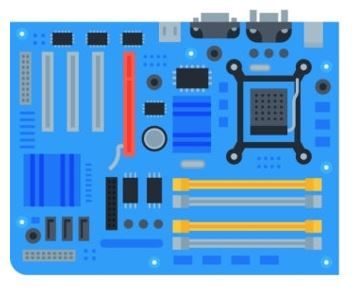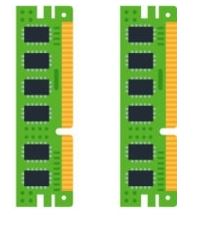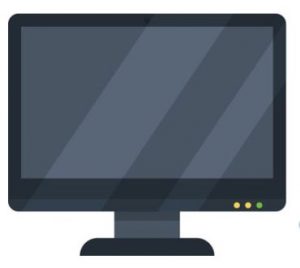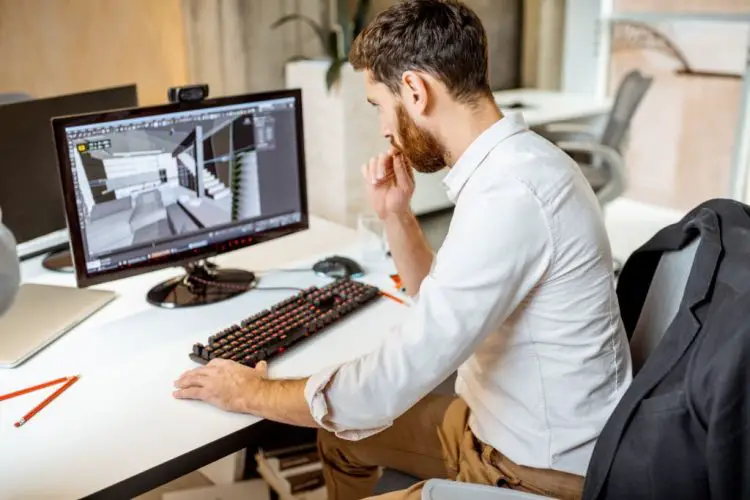Building a PC for home office work is totally different from a gaming PC. Parts that you need to install in an office-based PC cost less as compared to a gaming PC. As you would take a totally different type work from a workstation-based PC, you have to pick your parts carefully.
There are certain things to keep in mind before you build a productivity desktop PC. First and most important is having a quad-core CPU. Modern applications need you to have quad-core processor to shorten the response time.
Programs like MS Office, Adobe Photoshop, and related office-based programs highly depend on the single-core performance of a CPU.
Another important to look out is the GPU and Ram. You can go with a low-budget GPU at this point, however, make sure you choose the one that can comes with at least 4GB VRAM. As far as the ram is concerned, having 8GB RAM in office-based PCs is the bare minimum these days. But if you are working with complex applications, then our recommendation would be to go with 16GB of ram.
Enough overlook, let’s move on and talk about the parts you’ll need to build your first PC for office-based work.
Key Components You Require For Home Office PC
Motherboard

Choosing the type of motherboard will allows you to upgrade your PC later on depending upon your need and budget. A motherboard is the foundation on which you’ll connect all the other parts that will affect the performance of your PC.
When building a workstation or productivity-based PC, there’s no need to throw piles of cash to buy a motherboard. For example, there’s no need to invest your money in buying a gaming motherboard in this case.
It’s better to go with a simple and basic motherboard that supports the latest generation of processors and comes with at least 4 DIMM slots, and one PCIe x16 slot (used for connecting graphics card).
Another thing to keep in mind is the size of your motherboard. You can do this by keeping in mind the size of the PC case that you’ll choose. Motherboard come in various sizes like ATX, micro-ATX, mini-ITX etc.
If you are planning to buy a tower PC case, then go with a standard ATX or micro-ATX motherboard. In both of these types, there’s enough to install aftermarket PC peripherals.
CPU

It’s time to install the CPU, and we know it may take little time to decide which processor family and manufacturer you opt for. Place your CPU inside the socket within the triangle on the socket bracket.
There are two main CPU manufacturers in the market, Intel and AMD. Now, it entirely depends upon you which one you should go with. As per our experience, we’ve found AMD processors better at handling office-based applications and programs. Moreover, AMD CPUs are more affordable than Intel CPUs.
Also, keep in mind that, both the Intel and AMD have different CPU socket. So, make sure your socket type matches your motherboard. An Intel CPU with LGa 1151 socket cannot be installed on an AMD motherboard with AM4 socket.
So how much cores do you need on a CPU? Six-core CPU is the sweet spot nowadays, but so many manufacturers have been focusing on multi-core performance, especially for productivity tasks and applications.
GPU

For an office based PC, there is no need to go with a high-end GPU. However, you must pick a GPU that comes with at least 4GB of VRAM. Especially, if you are building a productivity desktop for video editing, graphics designing, etc, then you have to pick a good graphics card.
You have to choose between Nvidia or AMD for a graphics card. If you don’t rely heavily on graphical work, then you can start from Nvidia GT 1030, which is a low-budget card and good enough to tackle any office-based program.
However, if you need a better card, then our recommendation would be to go with GTX 1660 or GTX 1660 Super.
RAM

A maximum of 8GB RAM is good enough for day-to-day tasks but not effective for office work. Few applications need higher RAM to perform other tasks. Intensive tasks such as image and video editing and 3D modeling require 16GB or higher RAM.
Users who plan multiple productivity apps and web browsing experiences require a maximum of 32 GB RAM.
Check the highest capacity of RAM supported by your motherboard. Upgrading your ram also depends upon the availability of ram slots on your motherboard.
Some reliable ram brands are Corsair, Thermaltake, Kingston, HyperX, etc. Some brands are cheaper than other, so pick the one the falls under your budget.
Storage

As you would be dealing with productivity based applications, having enough storage would help you store larger files. Again it depends upon the type of work you need from your PC, if you are video editor or graphics designer, then you will need more storage to store those heavy 1080p or 4K files.
High-end storage options are available in the market, and you can choose whatever you want as per your needs and budget limitations. At present, you should go with at least 1TB storage space on your PC.
Users who have no budget should go for the 512GB SSD combination and upgrade it to 1TB and 2TB later on if they want.
Keyboard

Have you ever thought about mechanical keyboards and how can you improve productivity? The keyboard is essential for home office work and we suggest you opt for the mechanical keyboard with backlit keys and the best design.
Backlit keys improve key visibility when your room is dim, or you have to work late at night when other family members are sleeping. Silent key switches would be the best choice not to disturb others.
So many extra features are included, such as an additional USB port on the keyboard to attach a mouse or pen drive.
All keyboards are built the same, and some of them offer comfort for hours and comfortable for hours. Few ergonomic keyboards help to position the hands to place easily.
Mouse

People choose compact-sized mice, especially those who have to work for long hours in front of a PC. They should get a large-sized mouse with a flatter design.
Choose a mouse with additional keys and software that you can customize the control, speed, and behavior. Logitech, Microsoft, and Steel Series mice, are excellent.
You can go for the special models which offer great ergonomics design. The comfortable mouse would help to work without feeling tired. Best ergonomic and productivity mice are available to give you the best working experience.
Monitor

You should get the Full HD monitor, which gives you the best screen size and resolution to open the windows. A 27-inch monitor would give you a sharper result and speed up the workflow.
Get the monitor that offers 300 nits of brightness, and IPS LCD monitors offer wider viewing angles. LCD monitors should have a better contrast ratio than IPS LCD monitors with viewing angles.
People in the editing profession should go for color accuracy, which is an important thing to count. Check out how many colors are accurate, and they should prefer a monitor with 2-3 video input ports and a headphone jack.
How To Build PC?
All you need to do is put all the parts together and make sure you have kept it organized. Hardware can damage, but it’s easy to avoid. Unpainted metal surfaces protect the system’s components.
Make sure you put the motherboard in the case and consult every component as per the manual. Assembling isn’t that complicated. We recommend you follow the step-by-step instructions for every part.
It doesn’t matter whether you build pc for the office or home instructions are the same.
Advantages of Building PC
Here we have mentioned some of the advantages of building a PC:
Long-lasting
It seems people who build PCs would have better quality than pre-built computers. It would give a better build quality that makes the computer long-lasting. It will save you money in the long run because you will not need to replace or repair the components.
Easier to fix
On buying individual computer components they would have the extra spare parts which are unable to find in pre-built computers.
Additional parts would save you from costly repair bills or tech support. When components fail inside the PC, it’s easier to identify the issues because you are familiar with each part.
Overall quality
Building a PC would allow you to pick the best quality component that goes into the machine and have total control over the computer’s internal components. Pre-built PC often focuses on CPU or GPU. The rest of the components are cheaper and of low quality.
Final Thoughts
These are the ways to build a PC for the office at home. Make sure you are aware of all the PC components in detail. If you want this for your workplace to improve productivity then go for building because in this you can opt for desired components. Building a PC is much better than buying a built one.

Hi, this is Masab, the Founder of PC Building Lab. I’m a PC enthusiast who loves to share the prior knowledge and experience that I have with computers. Well, troubleshooting computers is in my DNA, what else I could say….

